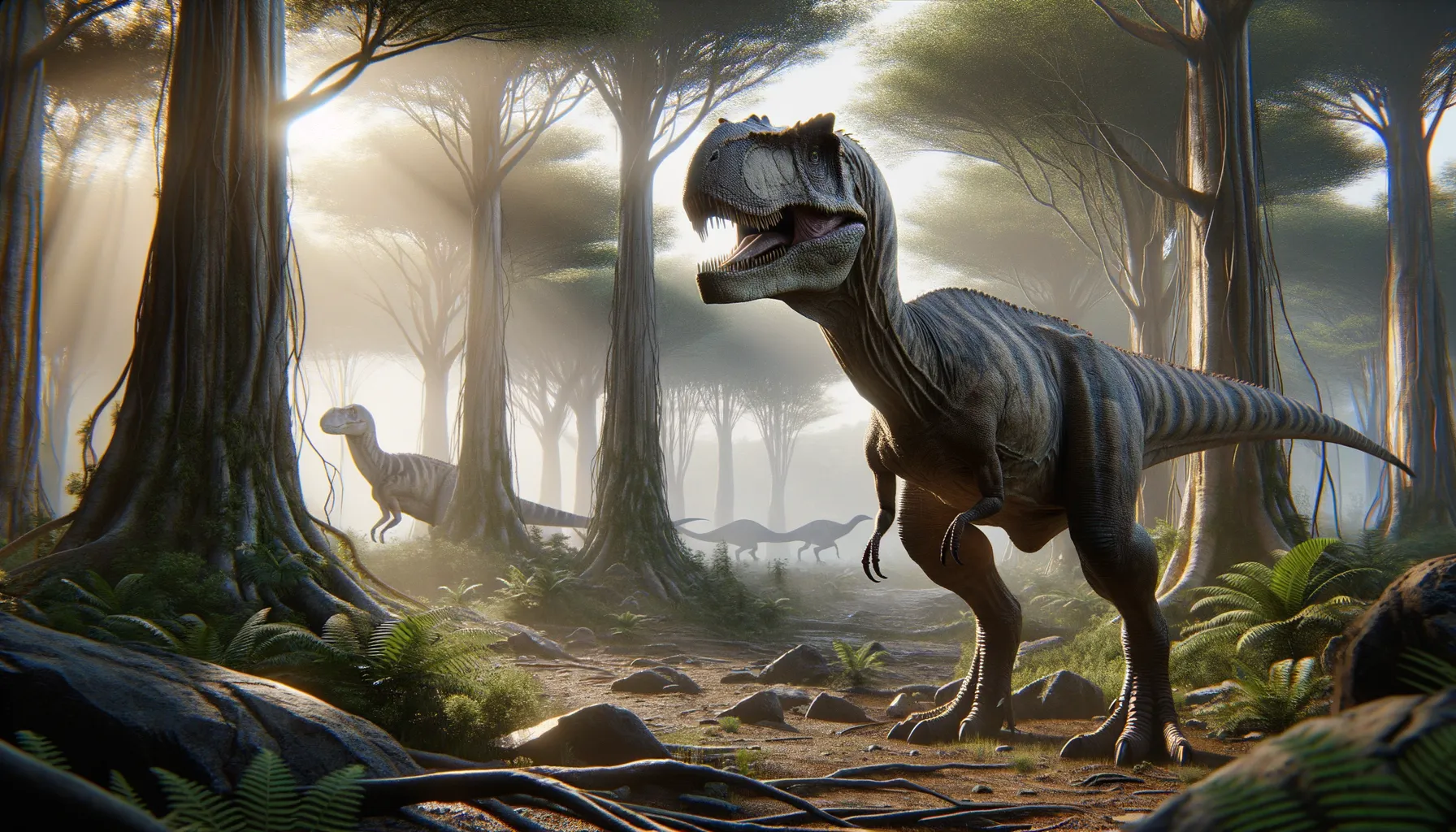
Arcovenator
A mighty hunter of ancient Europe.
Period
Cretaceous
Length
Roughly 6 to 7 meters long.
Height
Approximately 2 meters tall at the hip.
Weight
Around 1 ton, akin to a large cow.
Arcovenator was a theropod dinosaur that roamed what is now Europe during the Late Cretaceous period. It belonged to a group of carnivorous dinosaurs known for their strong build and sharp teeth. Arcovenator's discovery has provided valuable insights into the diversity and distribution of theropods across ancient Europe. Its name means 'arch hunter,' a nod to its predatory nature and the paleoenvironment in which it thrived.
Diet
Arcovenator was a carnivorous dinosaur, primarily feeding on smaller dinosaurs and possibly scavenging carrion. Its sharp teeth and strong jaws allowed it to tear into flesh with ease, making it a fearsome predator in its ecosystem.
Hunting
Arcovenator likely hunted in a solitary or semi-solitary manner, using ambush tactics to surprise its prey. Its keen senses would have been crucial for detecting prey in the dense foliage of ancient forests.
Environmental challenges
Arcovenator lived in a dynamic environment with fluctuating climate conditions, which might have influenced its habitat choice and hunting strategies. It had to compete with other large predators for territory and resources. Seasonal changes likely affected prey availability, requiring adaptability in its hunting behavior.
Speed
Moderate, likely adapted for short bursts.
Lifespan
Estimated to be several decades, like many theropods.
First discovery
Found in southern France in 2006.
Fun Facts
- Arcovenator is a dinosaur that lived roughly 70 million years ago during the Late Cretaceous period.
- Its name translates to 'arch hunter', reflecting its predatory lifestyle.
- The fossils of Arcovenator have been found in what is now southern France, giving scientists insights into the dinosaurs of Europe during that era.
- Arcovenator belonged to a group of dinosaurs called abelisaurids, known for their distinctive short arms and striking skull features.
- This dinosaur was a carnivore, likely hunting other small to medium-sized dinosaurs and possibly scavenging from larger predator's kills.
- Arcovenator's strong jaws and sharp teeth made it a formidable predator in its ecosystem.
- Despite its fearsome reputation, like many dinosaurs, Arcovenator faced threats from bigger predators and environmental changes that ultimately led to its extinction.
Growth and Development
Arcovenator's growth was influenced by environmental factors and availability of food, which played a critical role in its development. As it matured, its hunting prowess and territorial range would have expanded. Like other theropods, it likely underwent significant growth spurts during its juvenile years.
Habitat
Arcovenator thrived in semi-tropical regions characterized by lush, dense forests and a variety of prey. These environments provided both shelter and hunting grounds, essential for its survival. Water sources, such as rivers and lakes, would have been important for sustaining both Arcovenator and its prey.
Interaction with other species
Arcovenator shared its habitat with various herbivorous dinosaurs, as well as other predators, leading to complex ecological interactions. Territorial disputes with other carnivores were likely common, necessitating a strategy for asserting dominance. Its presence in the ecosystem helped control the population of prey species, maintaining a balance within its environment.
Natural lifespan
Arcovenator is thought to have lived for several decades in the wild.
Reproduction
Arcovenator likely laid eggs in nests, which were carefully guarded by the parents or left to incubate naturally. Juveniles were presumably independent relatively quickly, though parental care might have extended for some time to ensure survival. Breeding cycles may have been timed to coincide with seasonal abundance of prey.
Social behaviour
Arcovenator was probably a solitary hunter, although it may have formed temporary groups during mating season or when resources were plentiful. Displays of aggression were likely common when competing for mates or territory. Its vocalizations and physical displays played a role in communication within and outside its species.
Fossil locations
Arcovenator fossils were first uncovered in southern France, providing evidence of its presence in Europe during the Cretaceous period. These discoveries have been crucial for understanding the distribution of theropods in this region. Fossil sites often include bones and teeth, helping researchers piece together its anatomy and ecological role.
